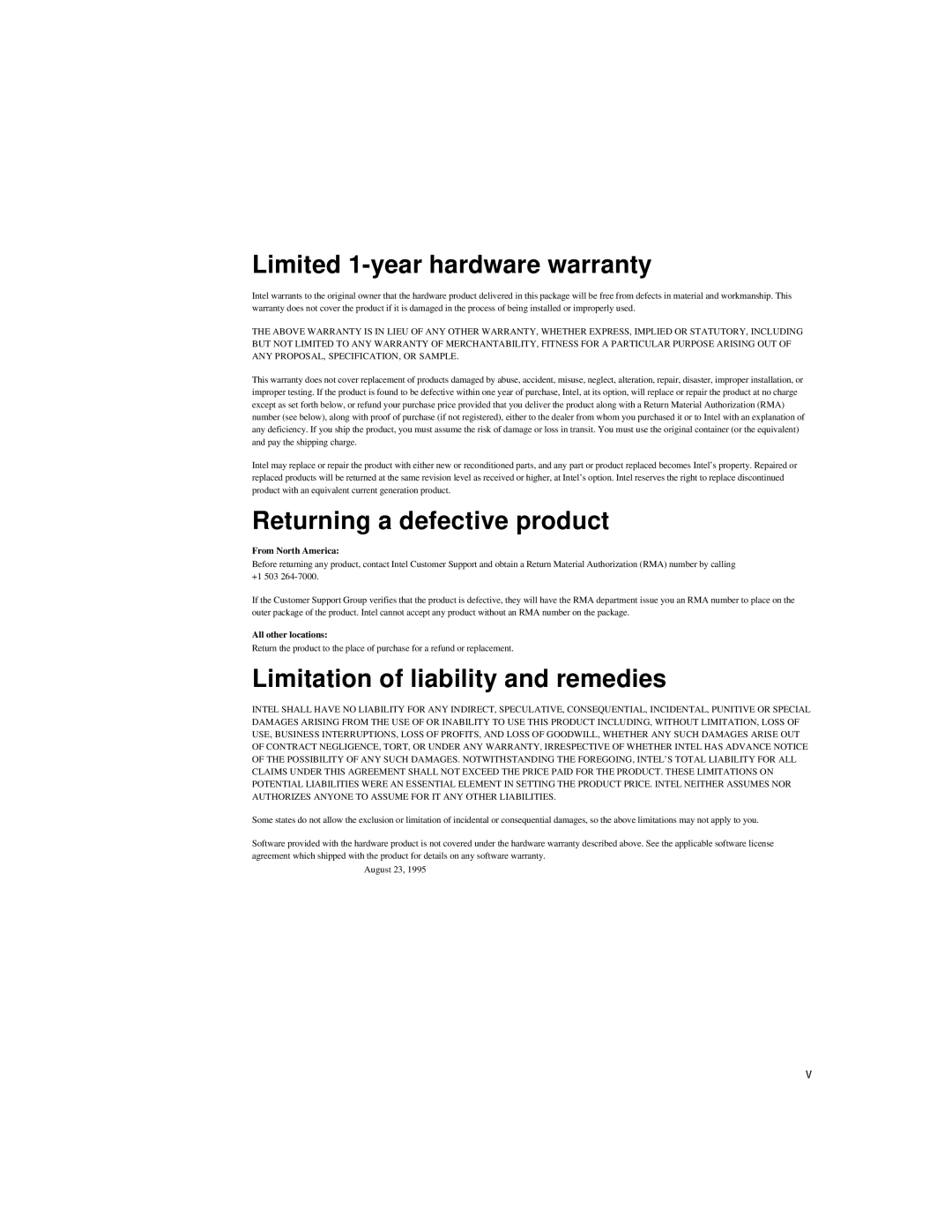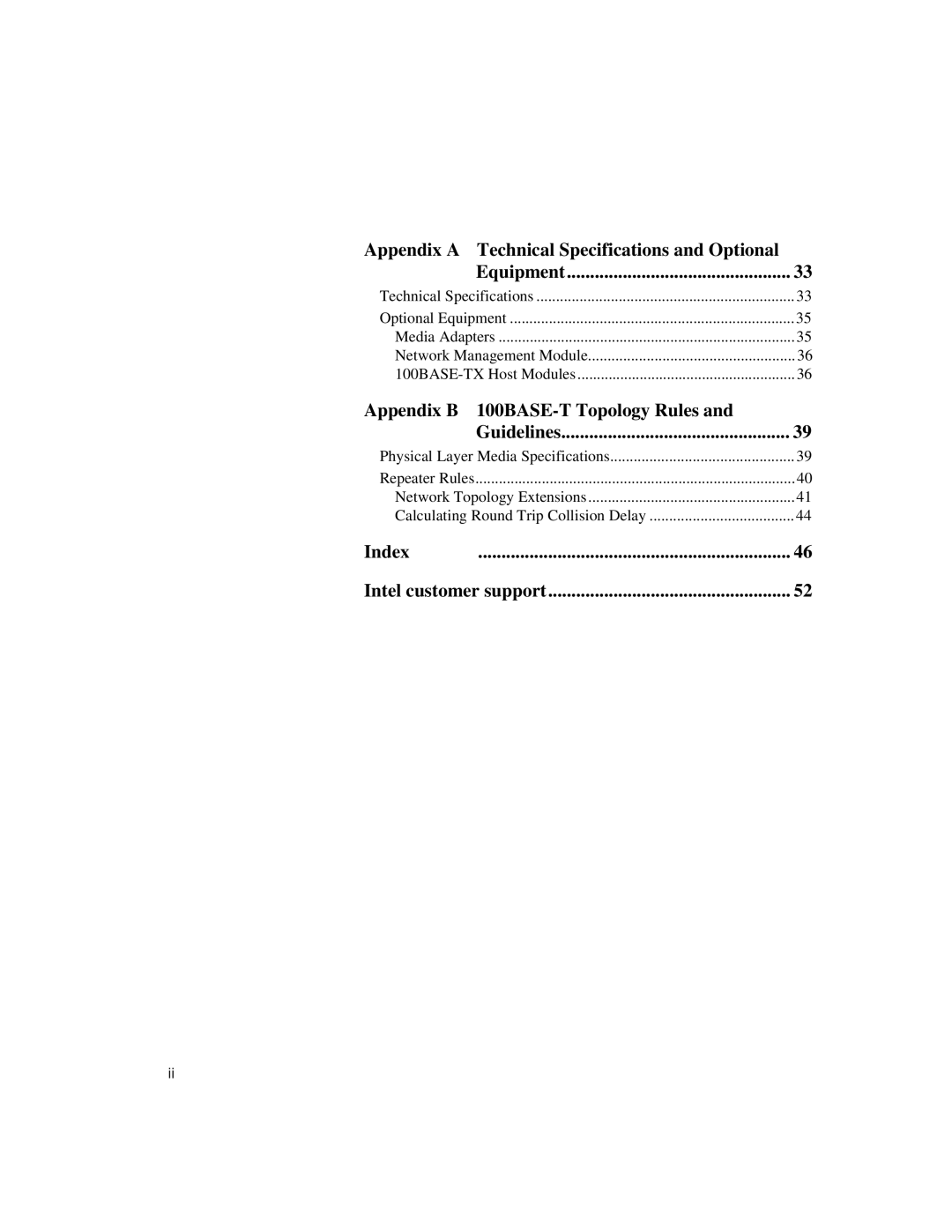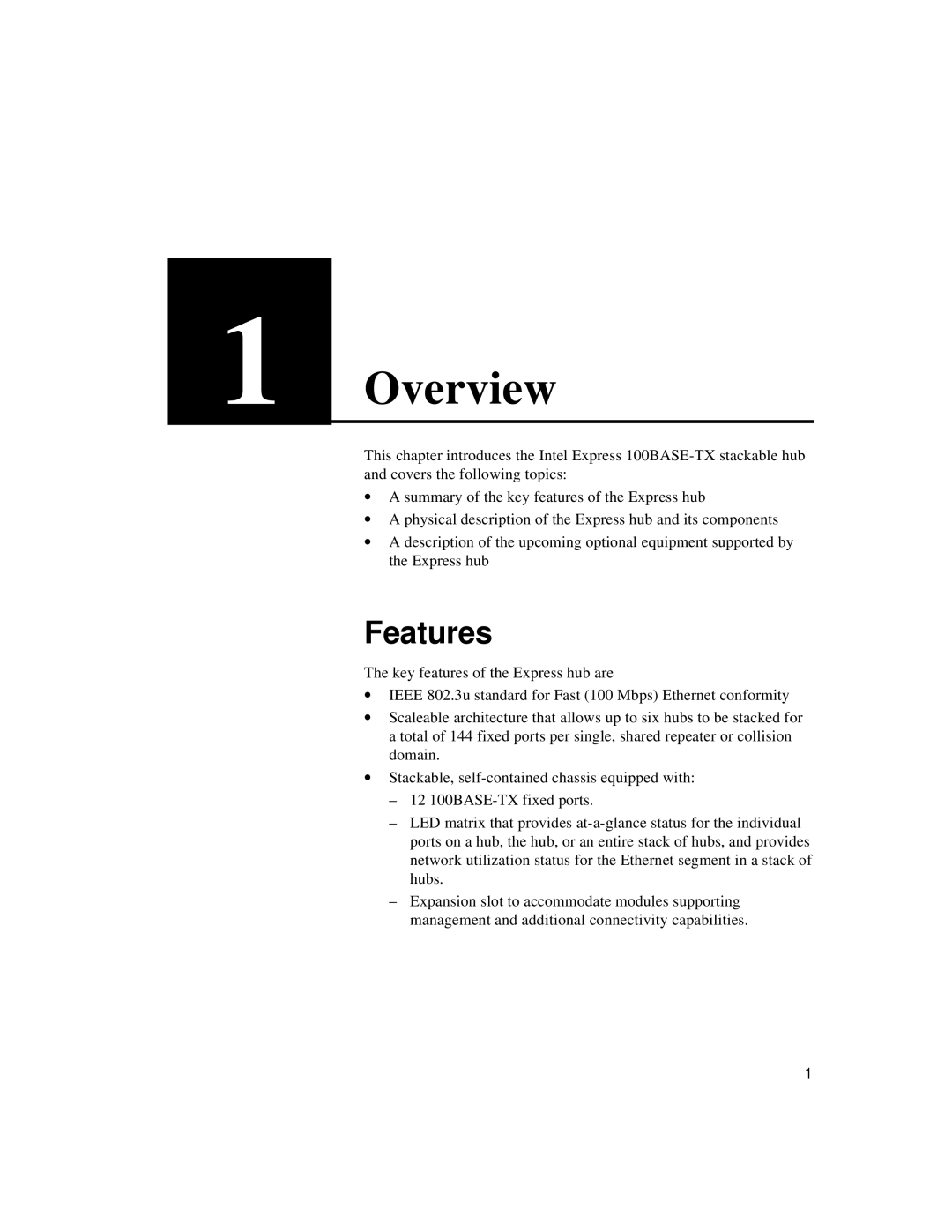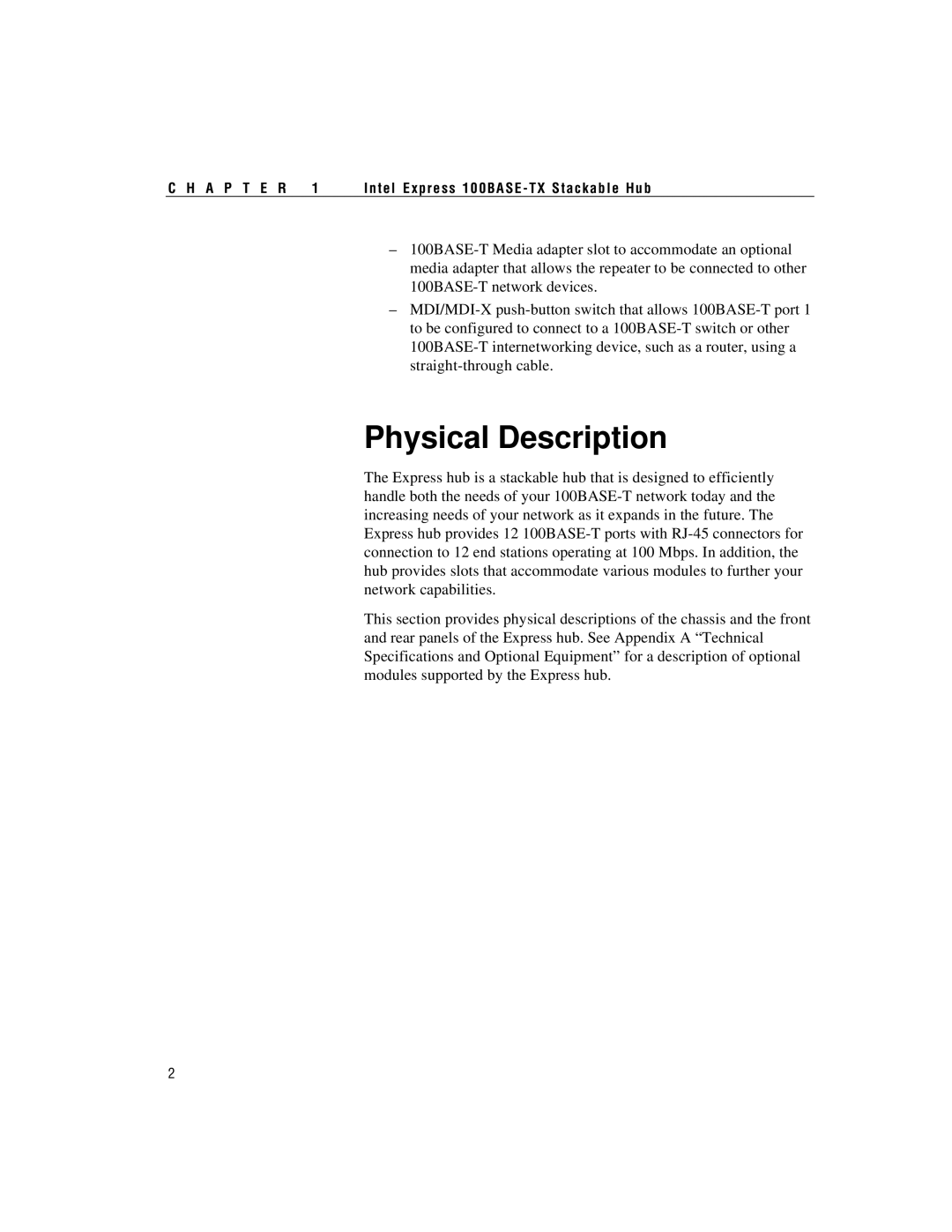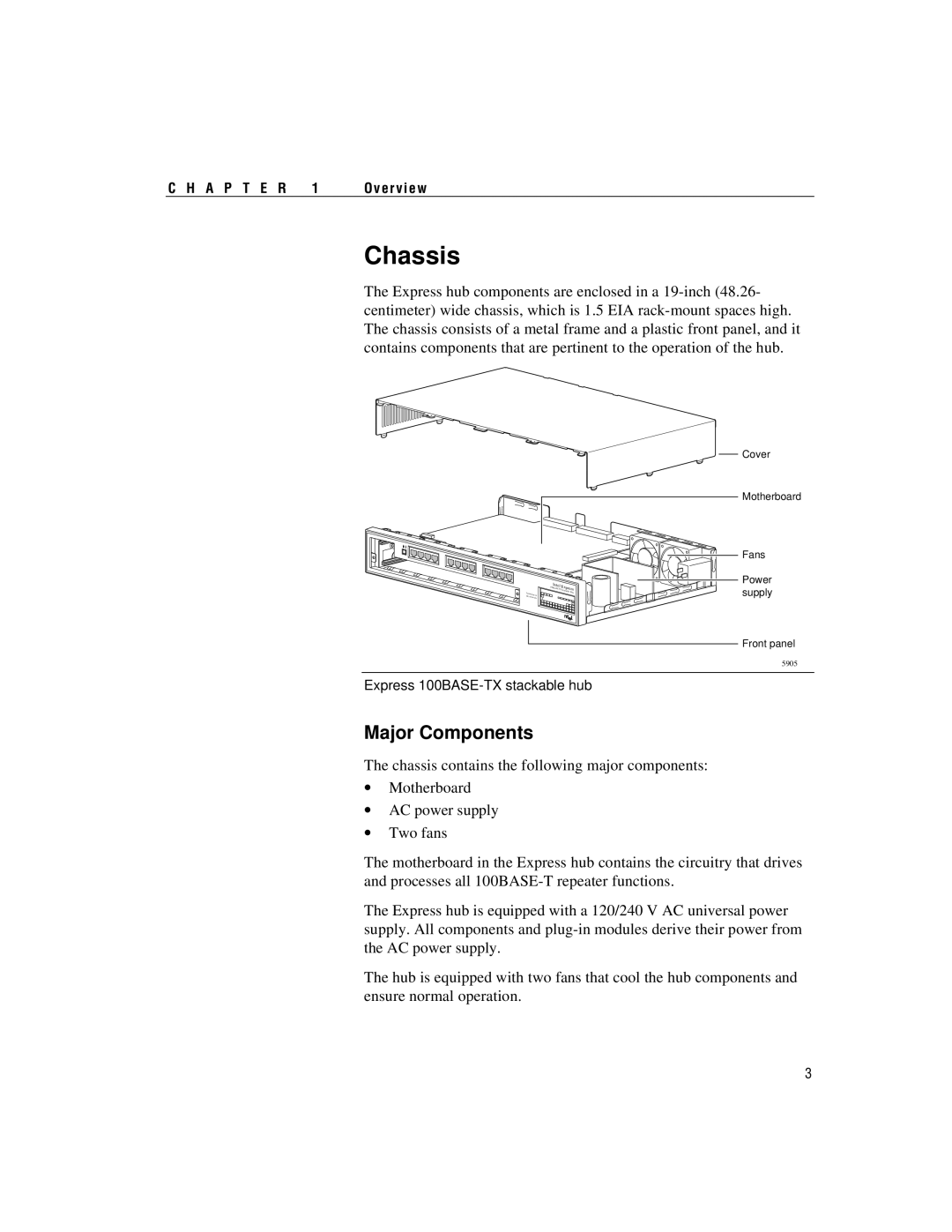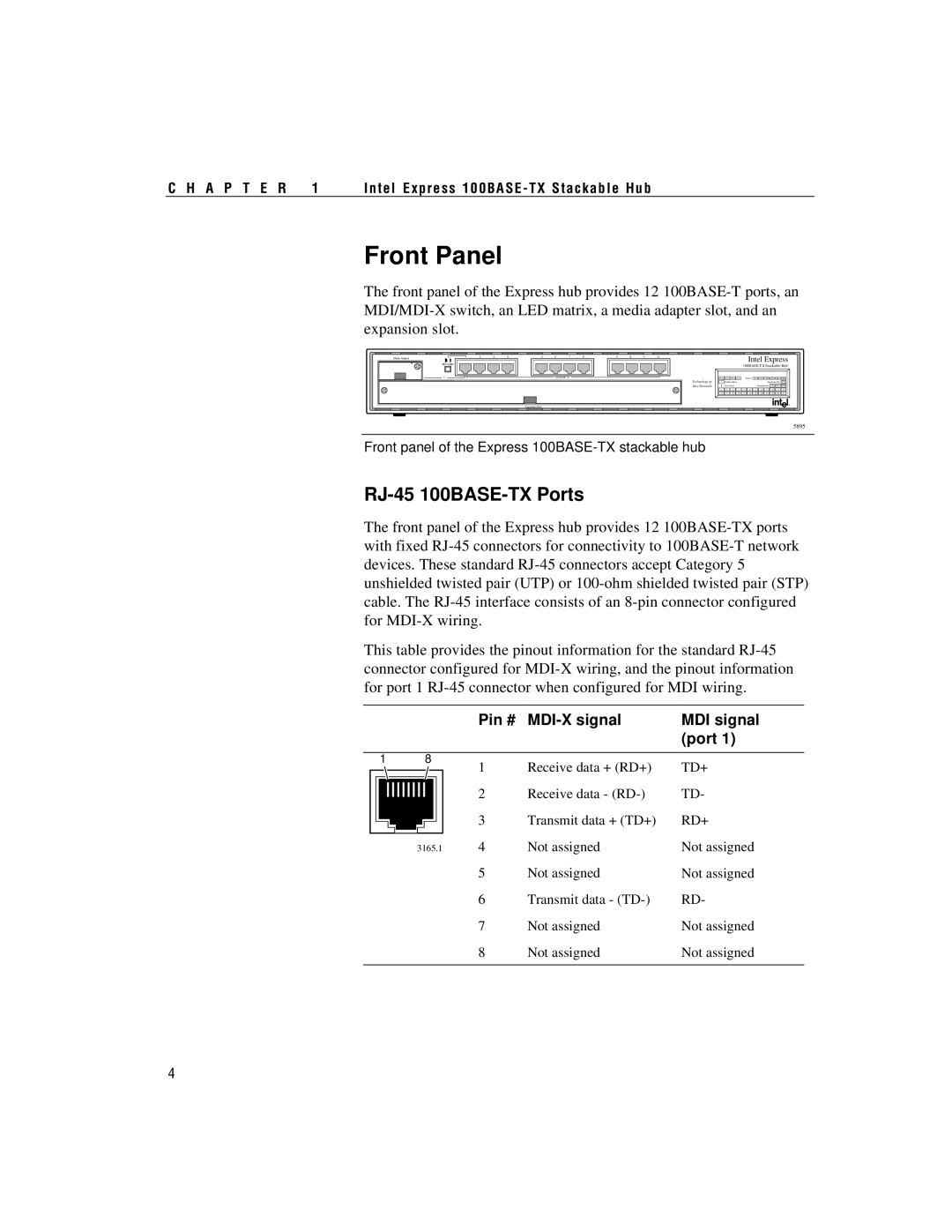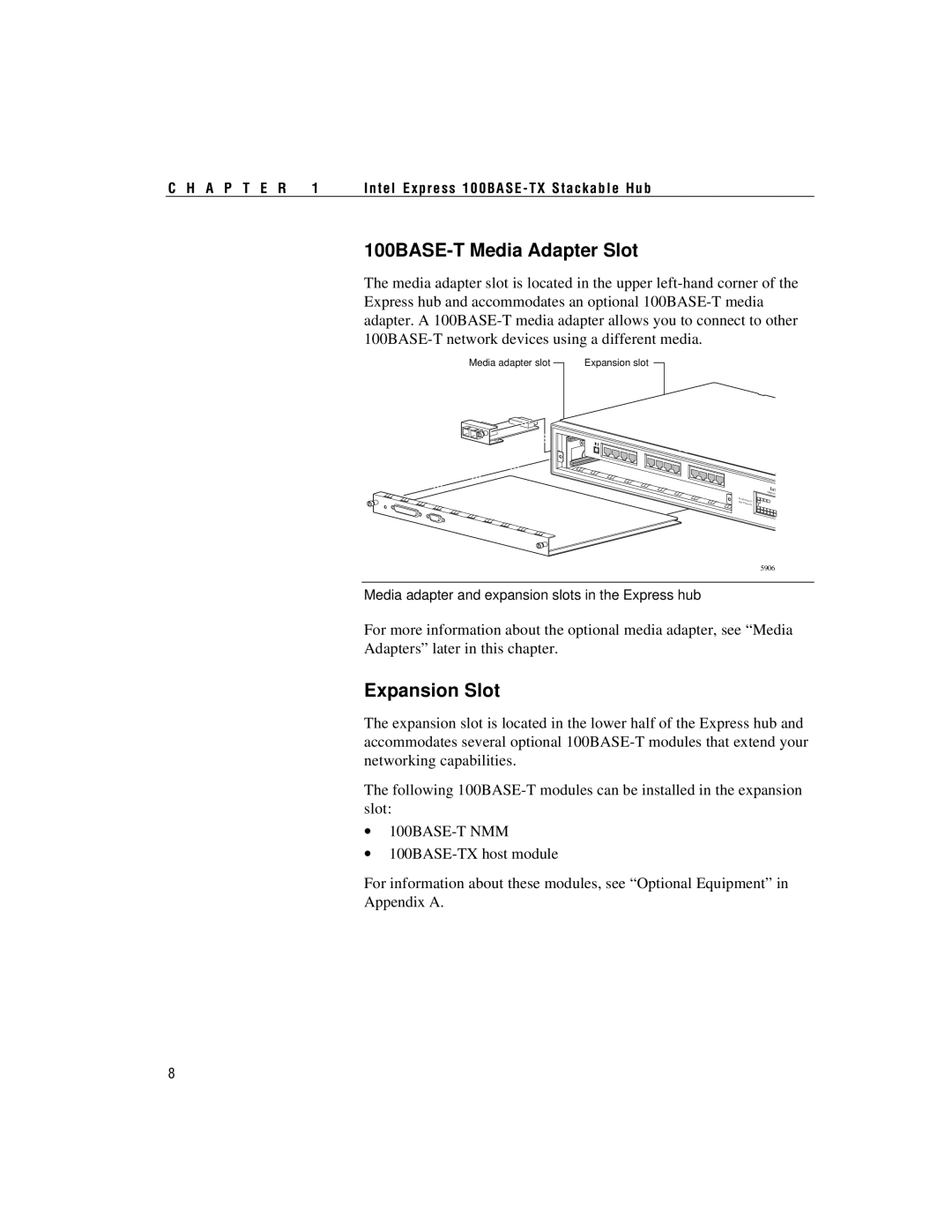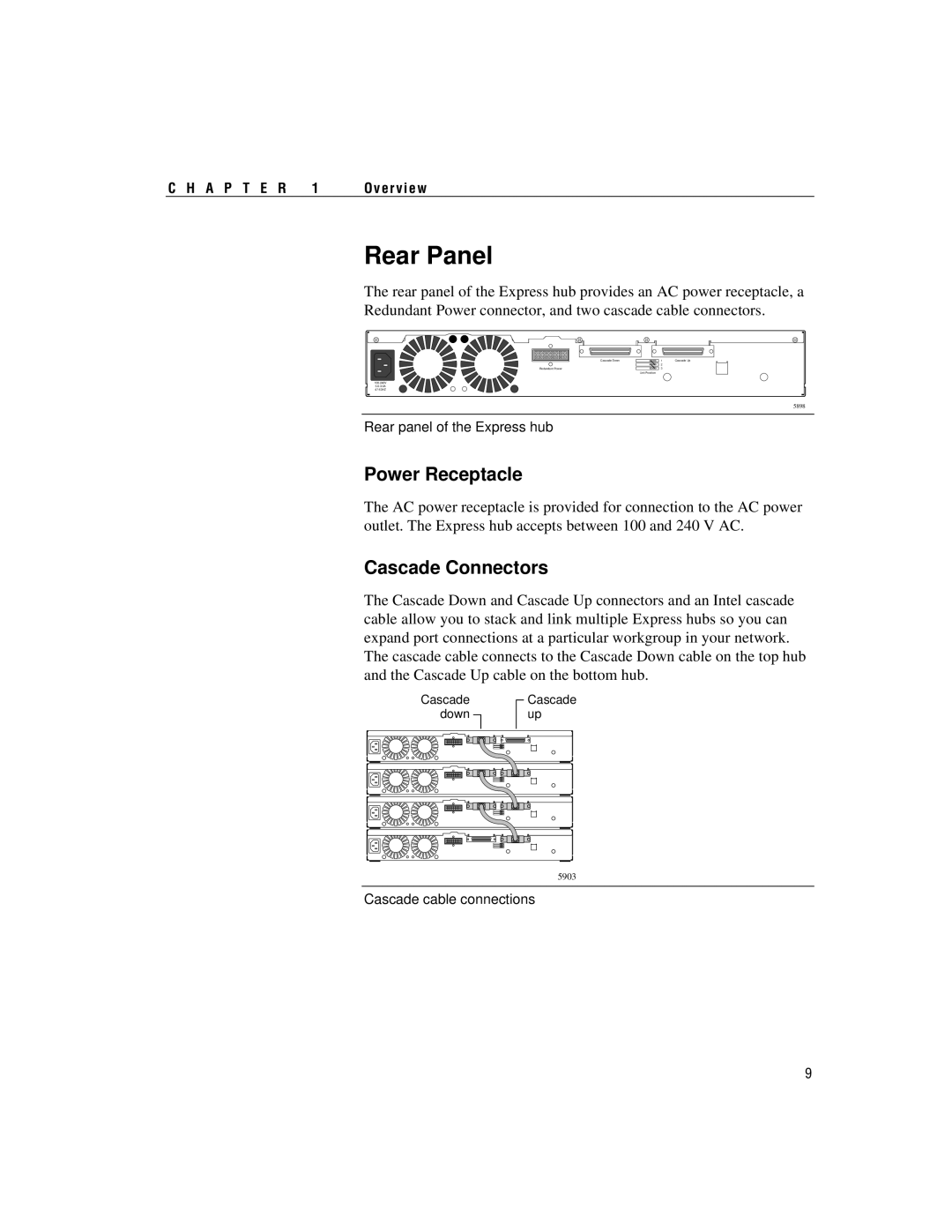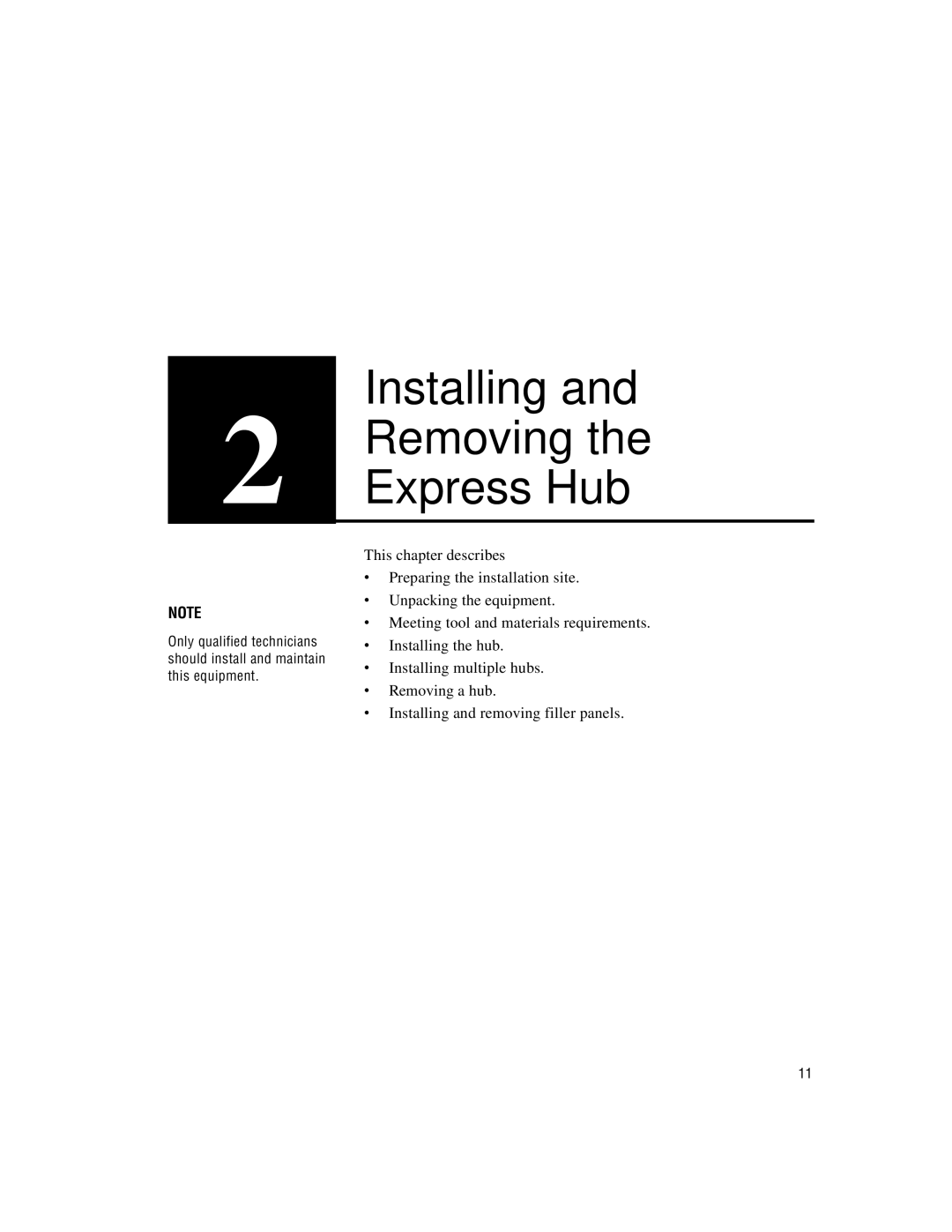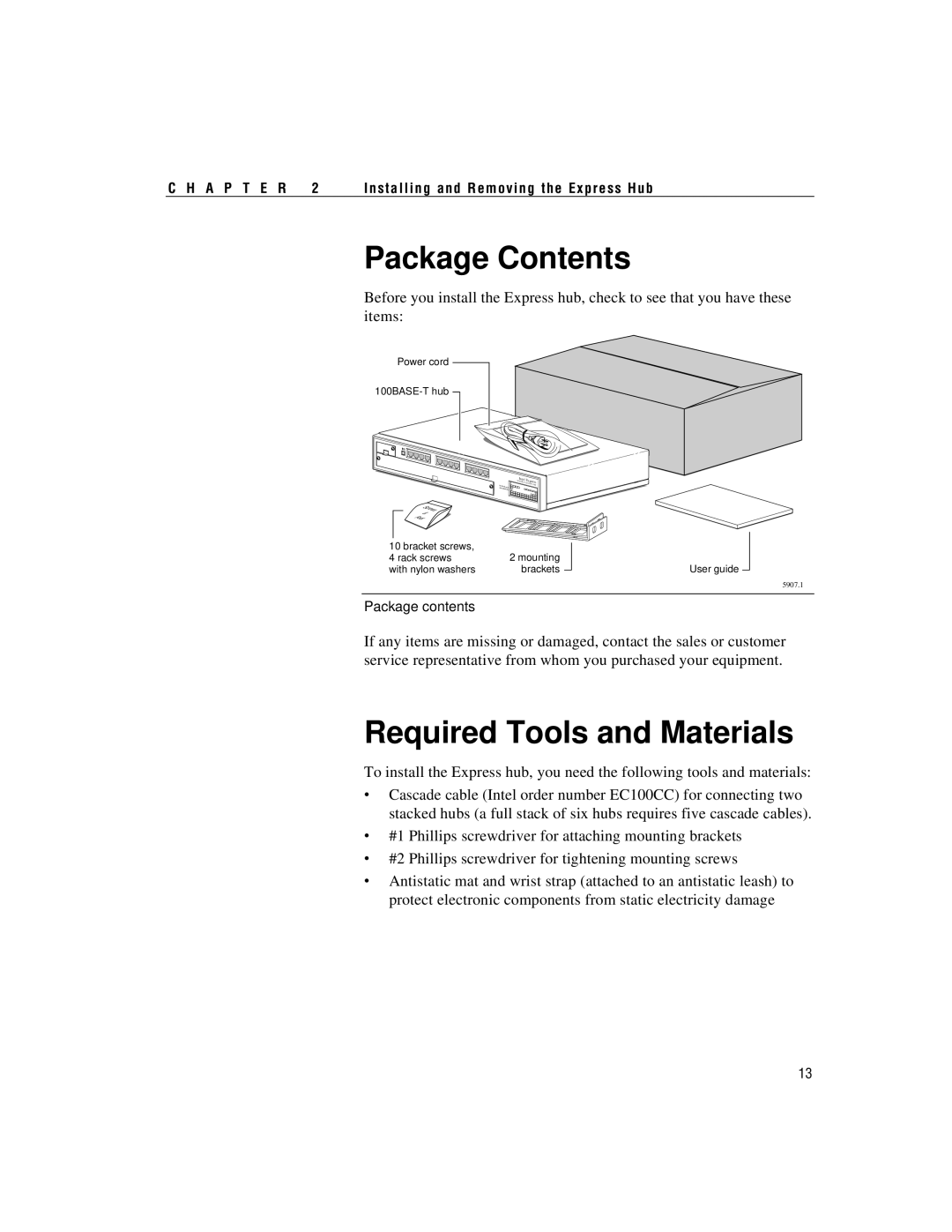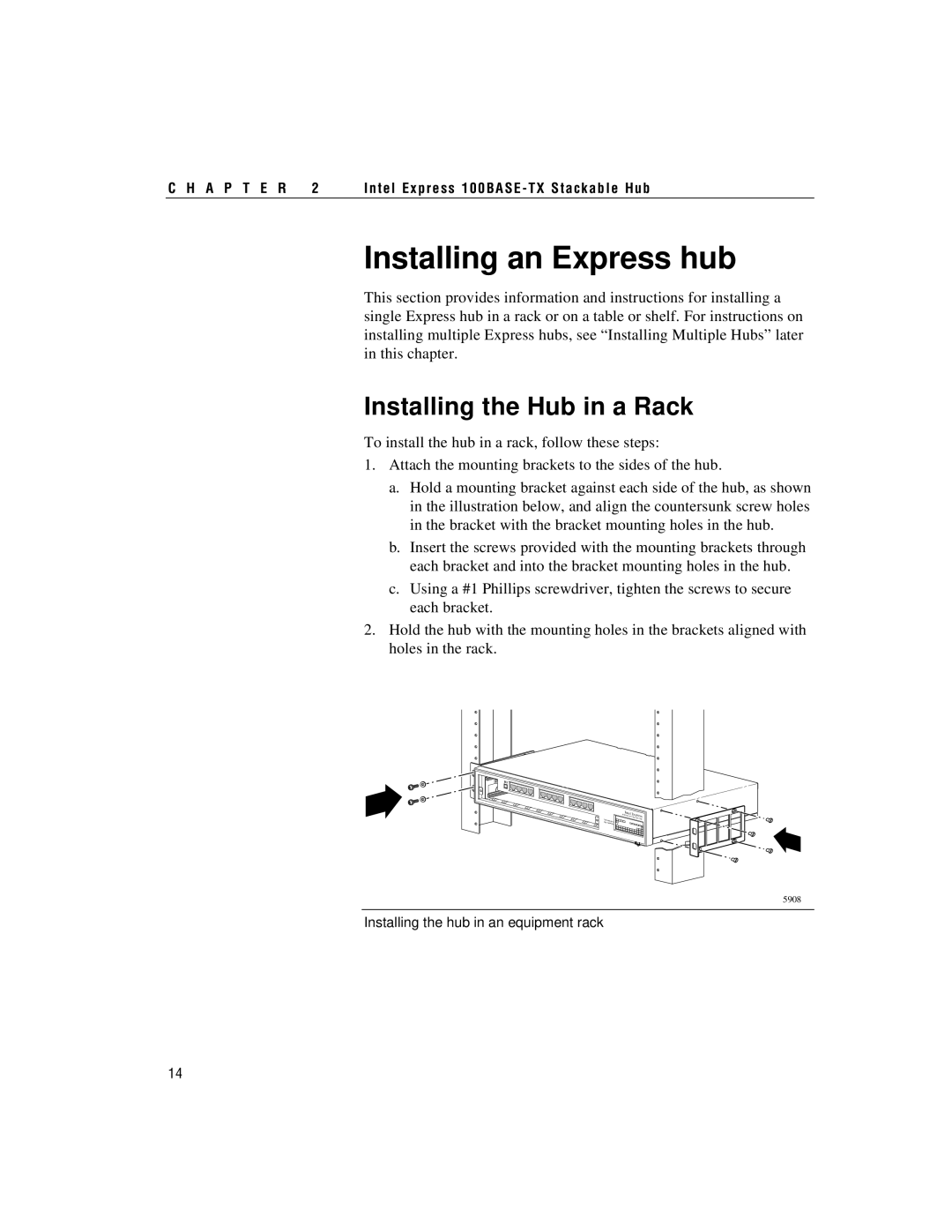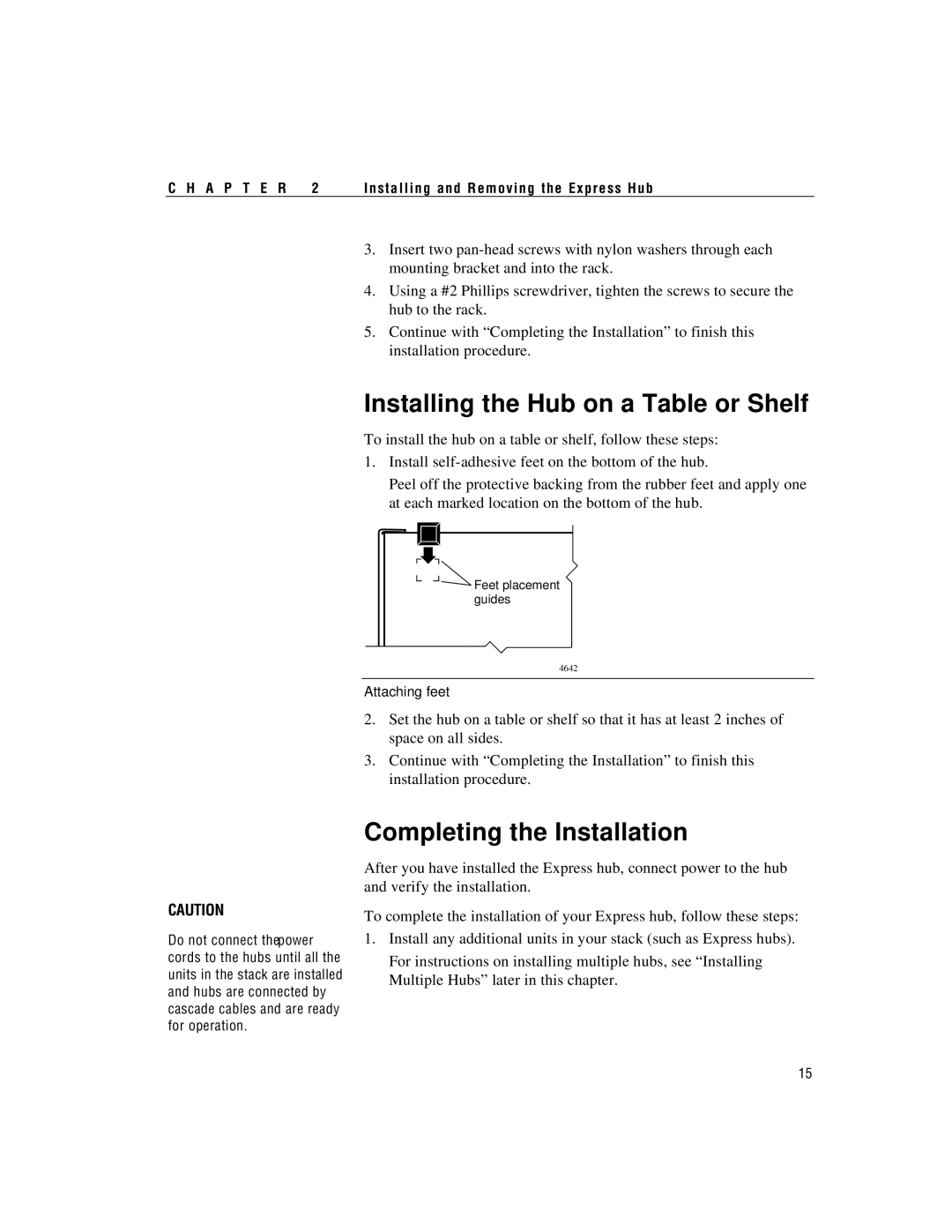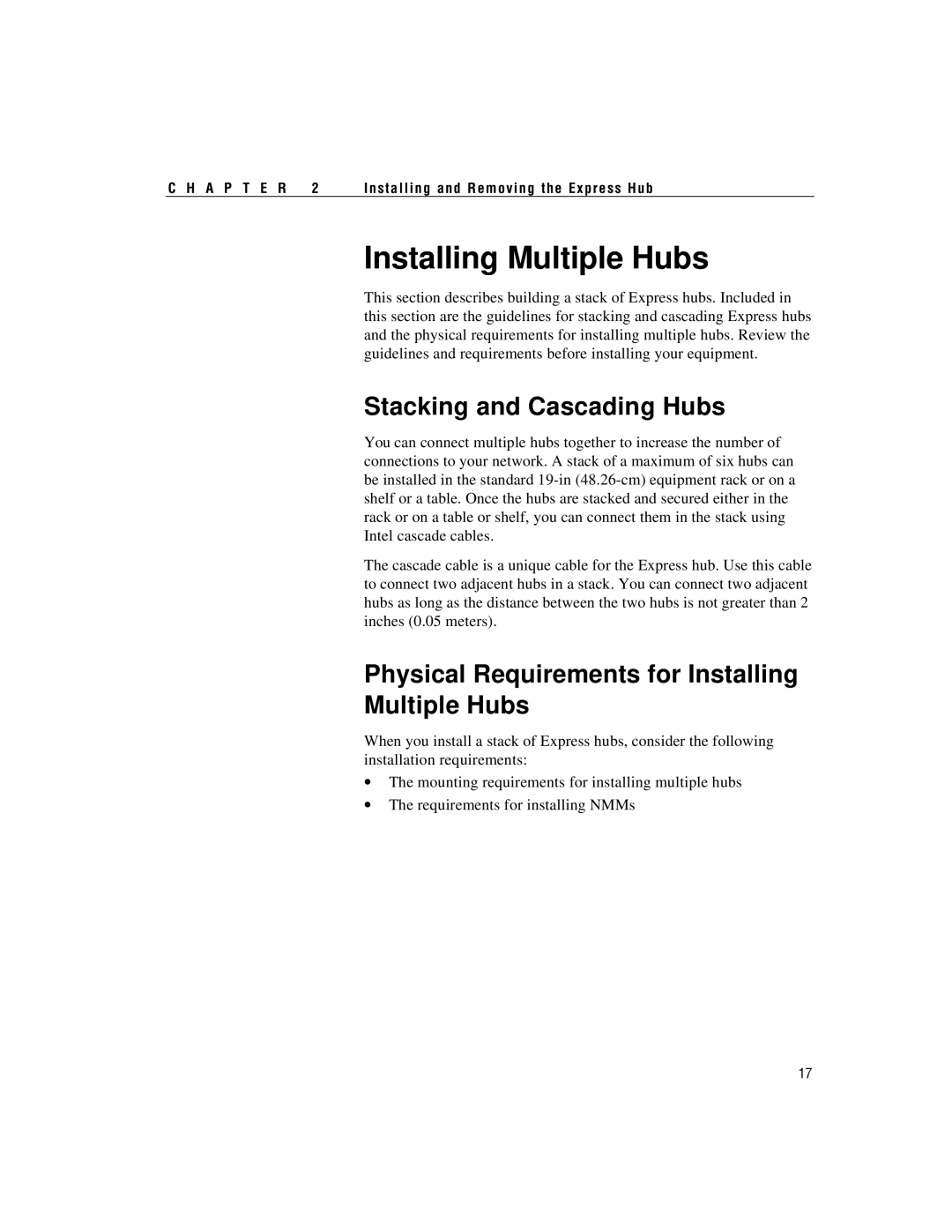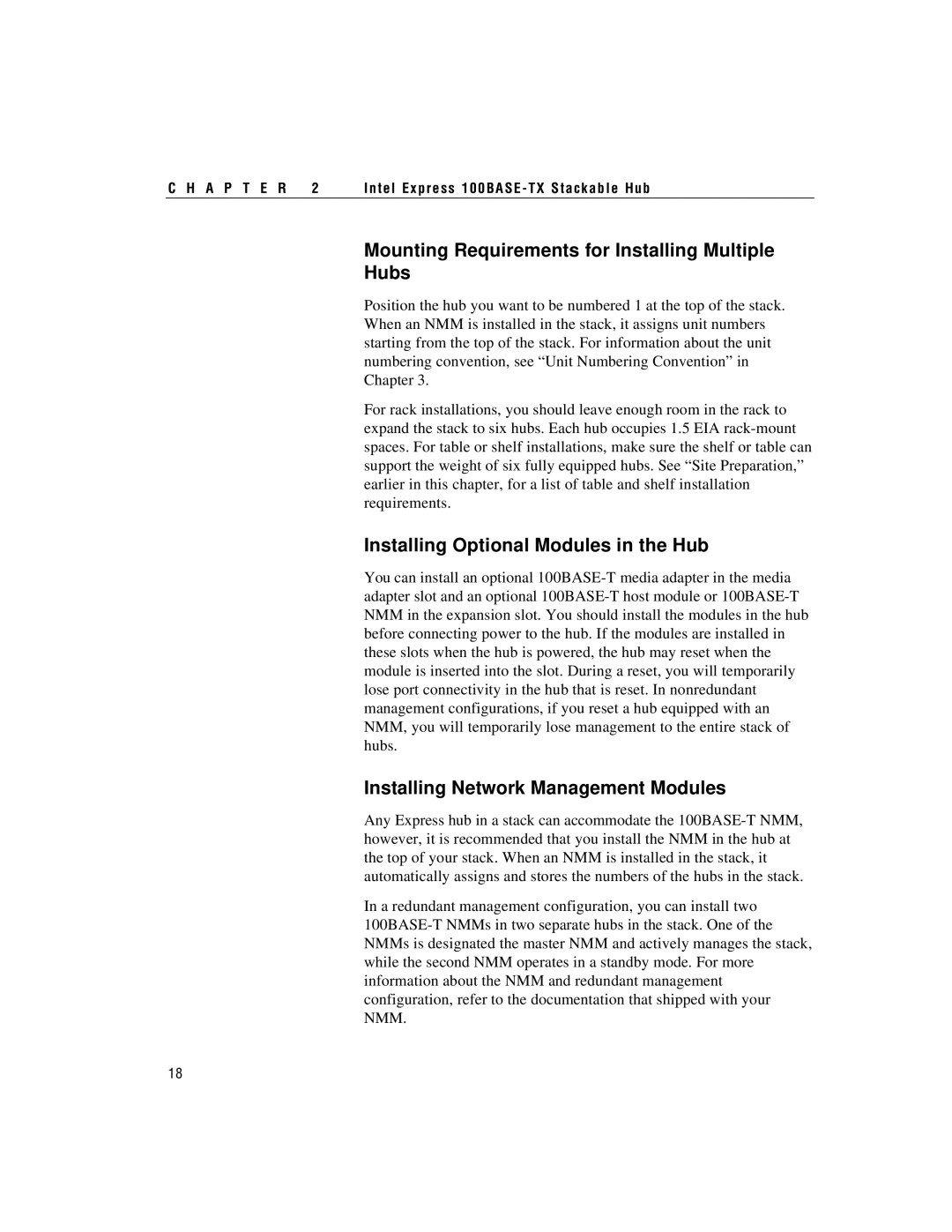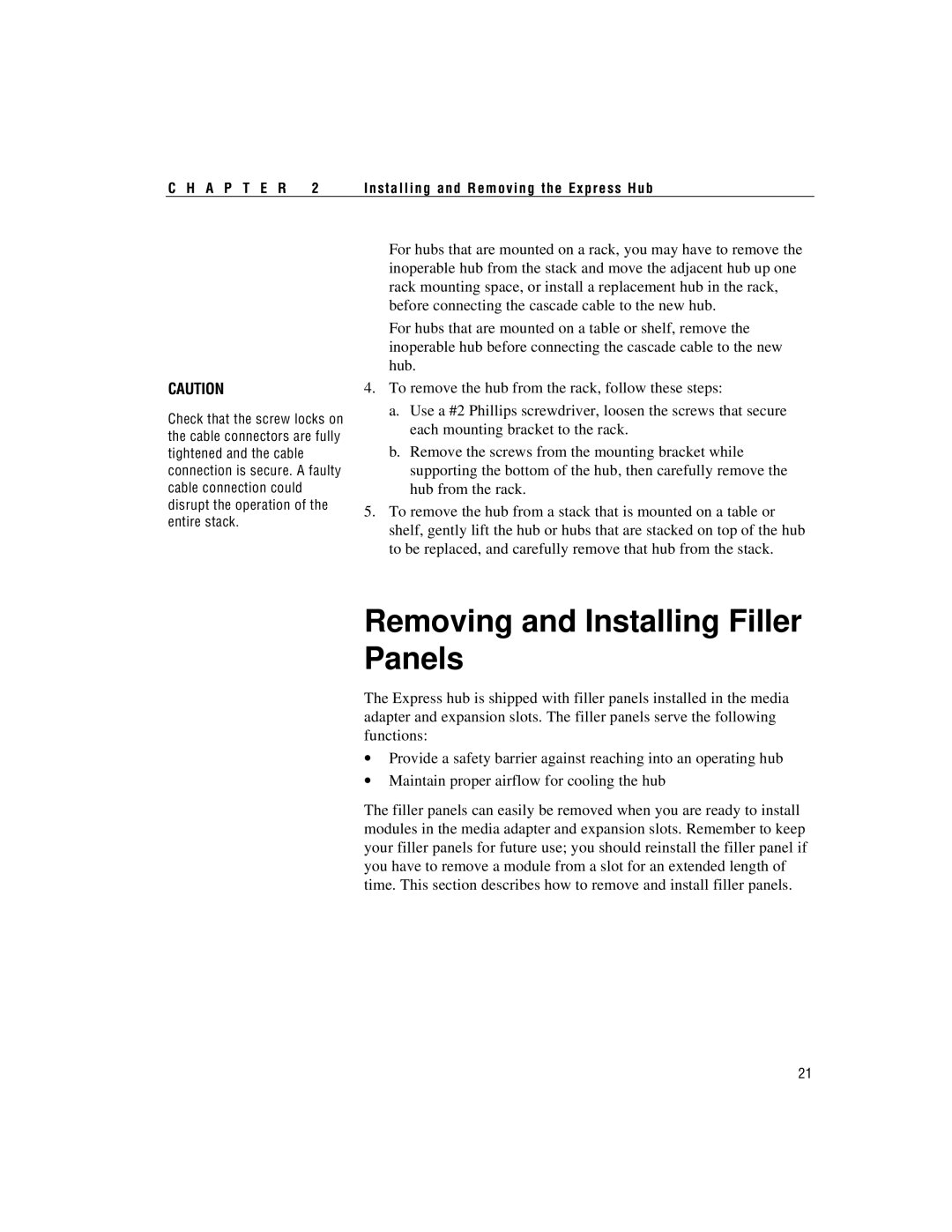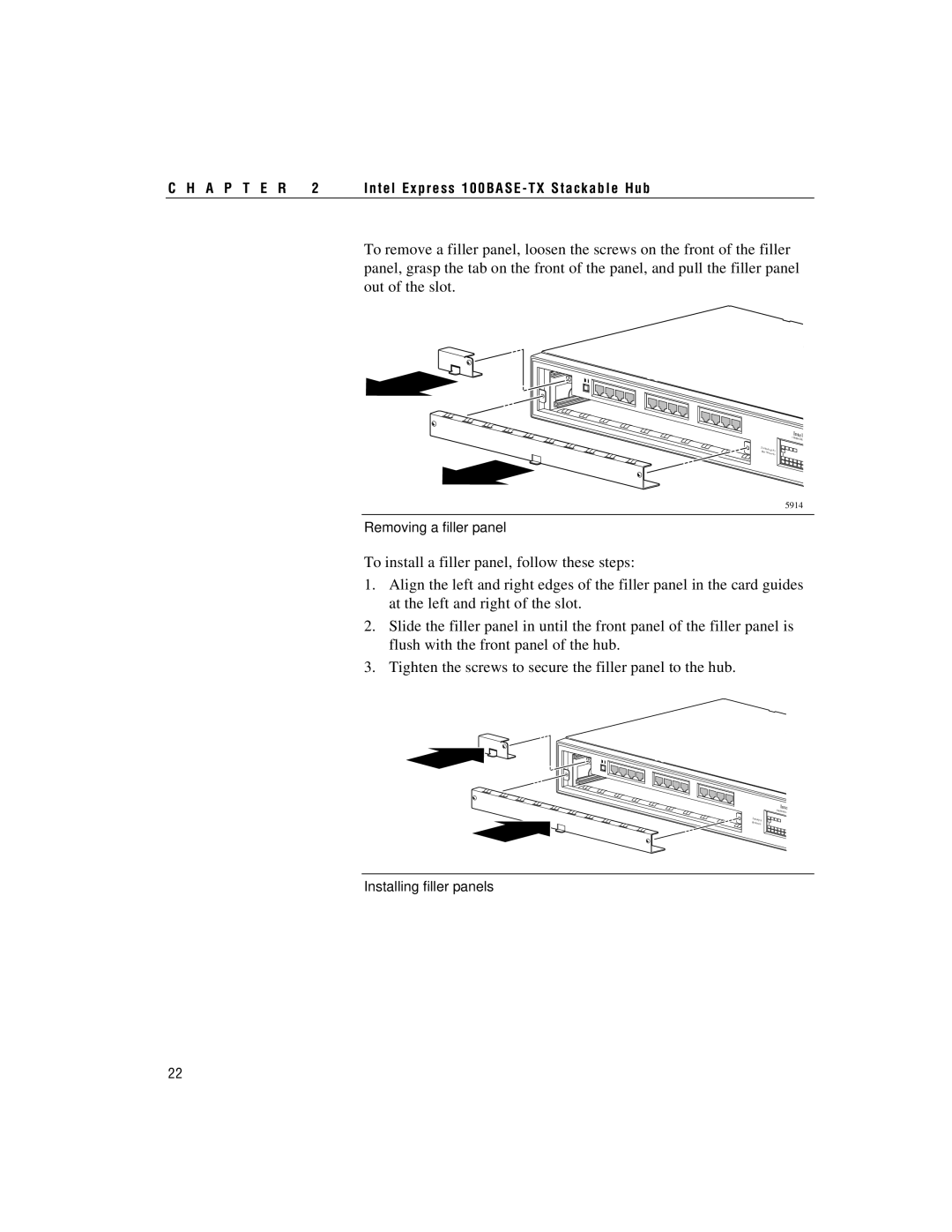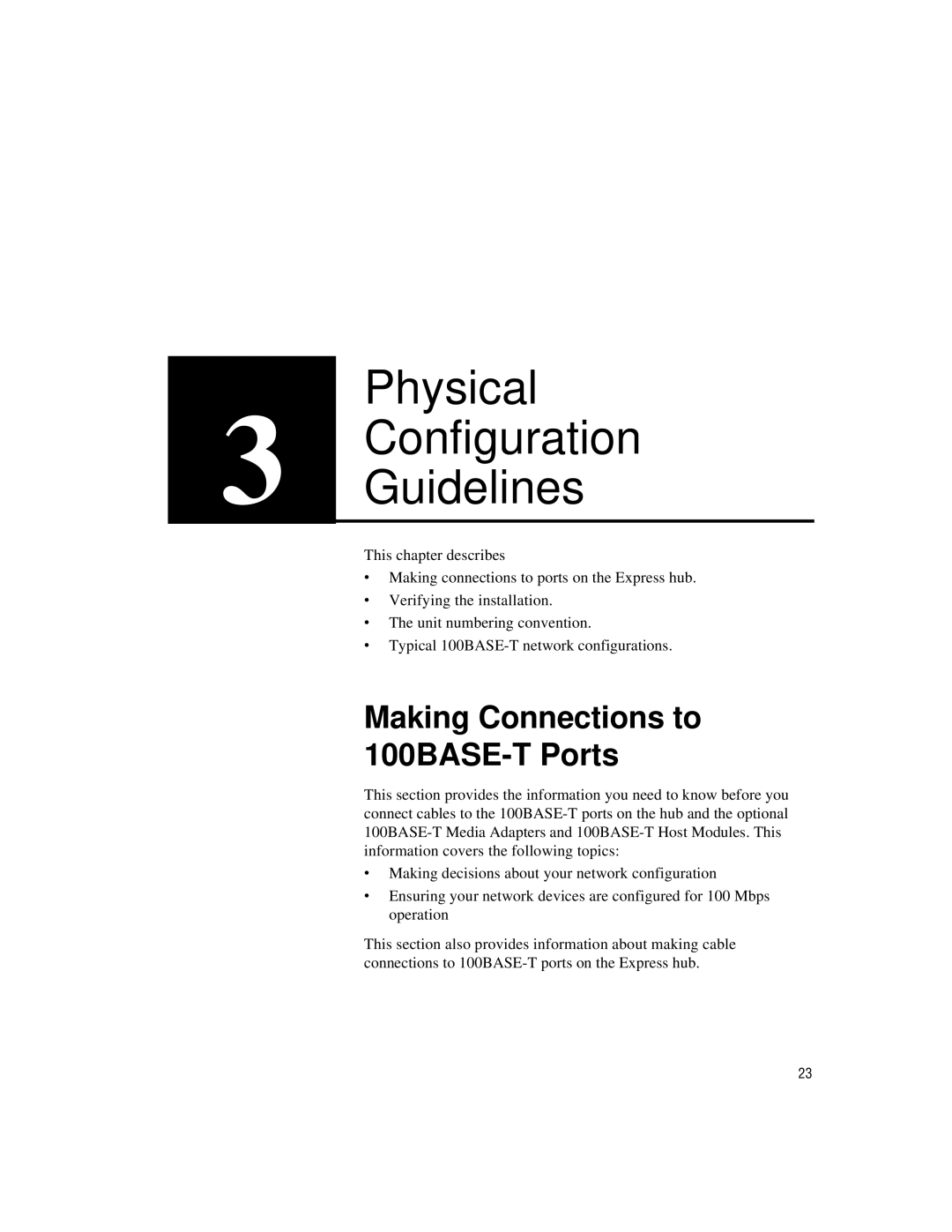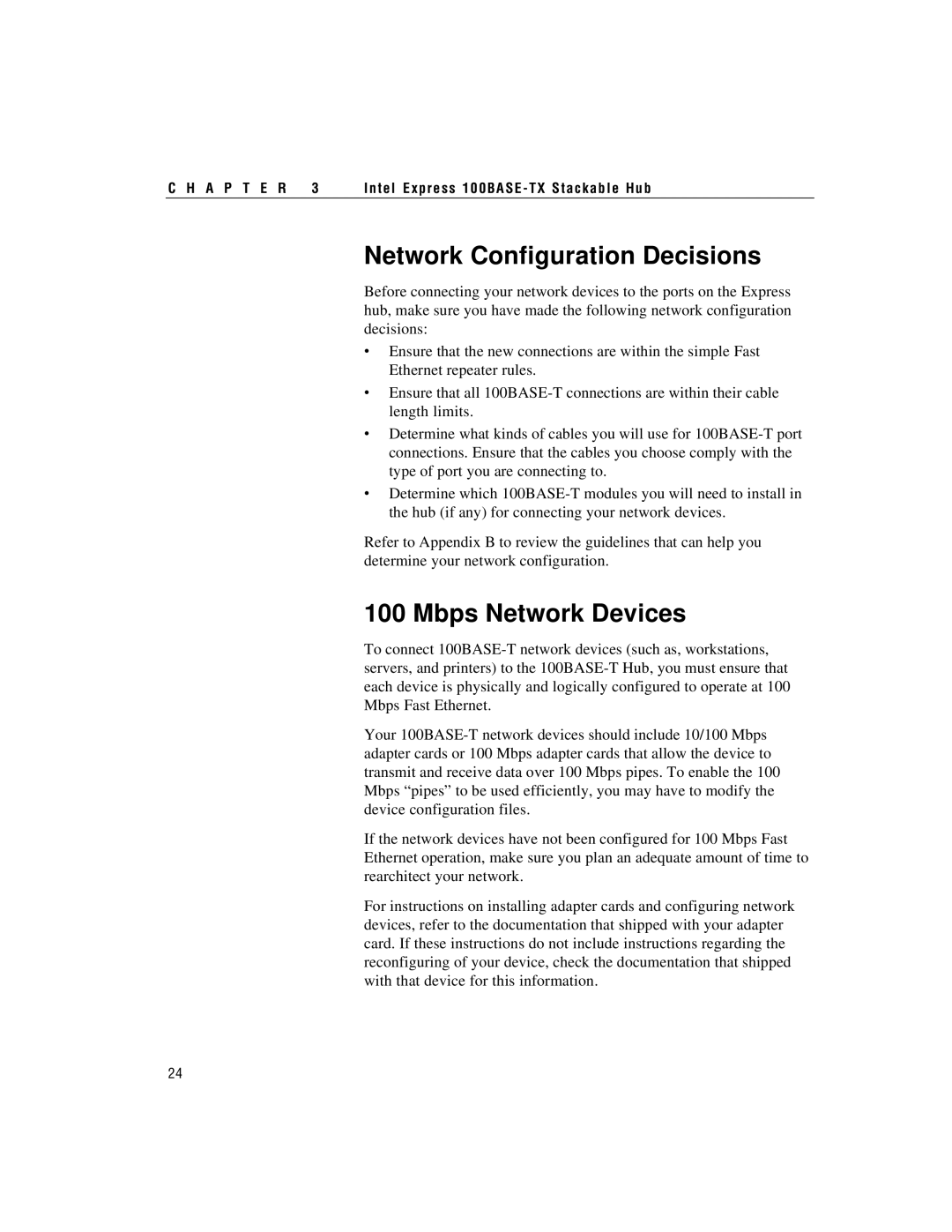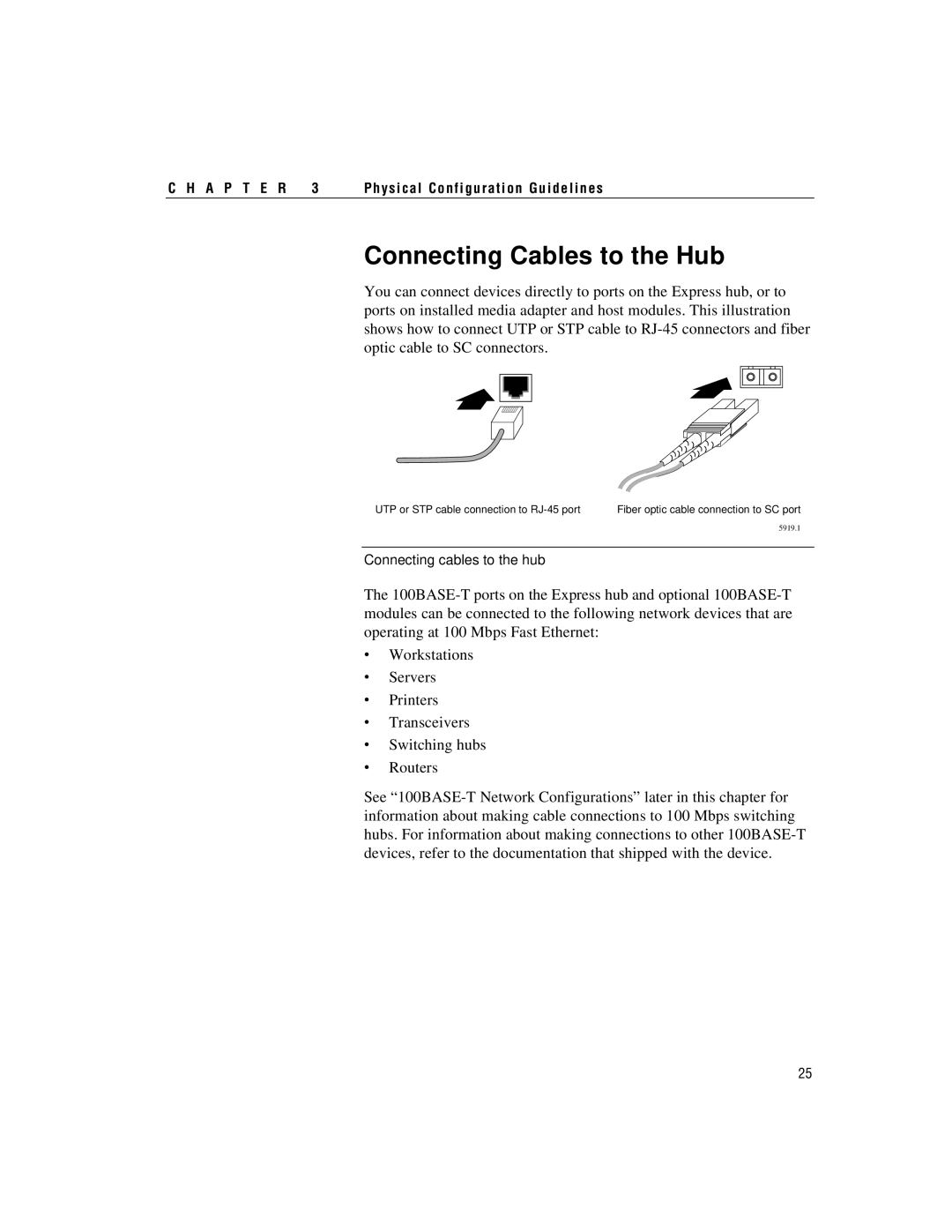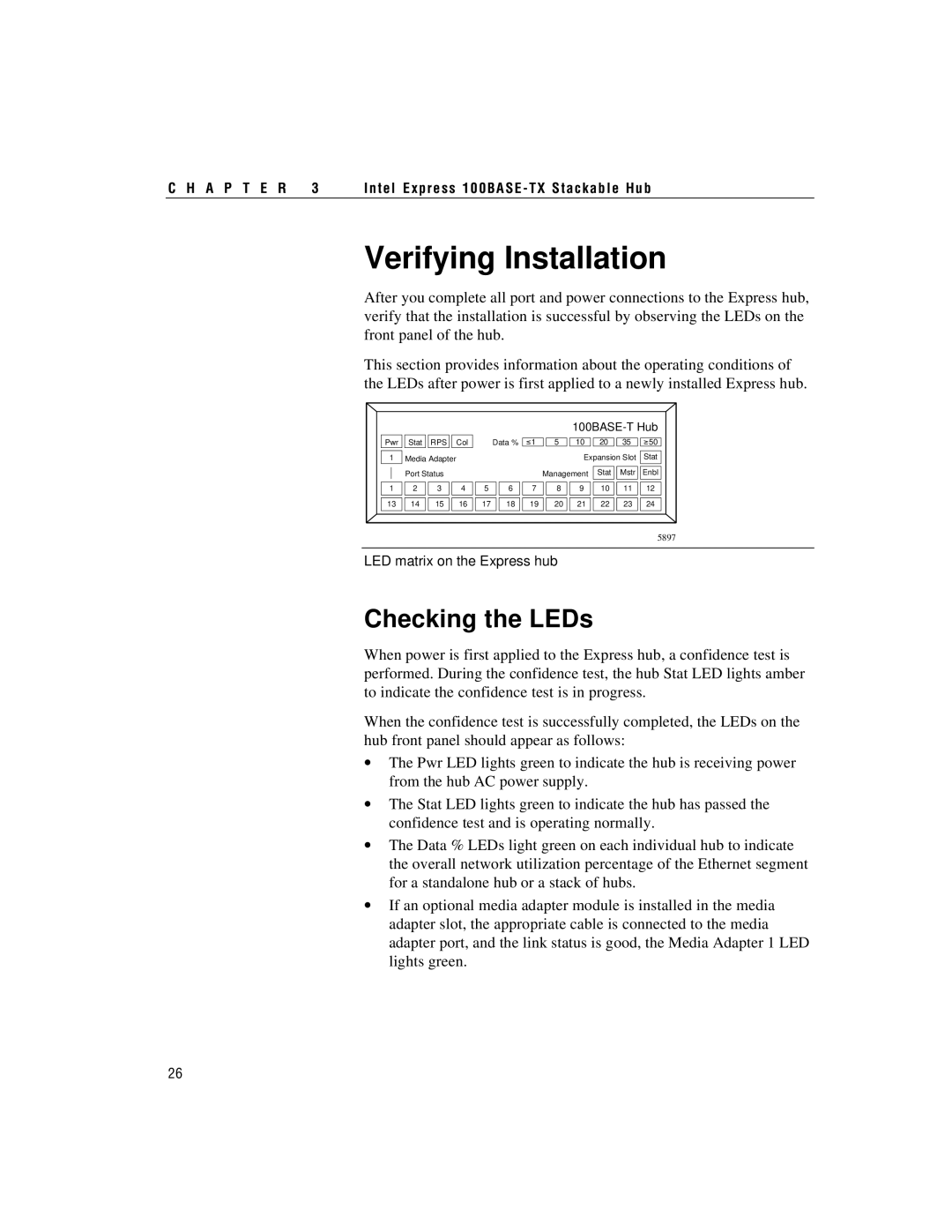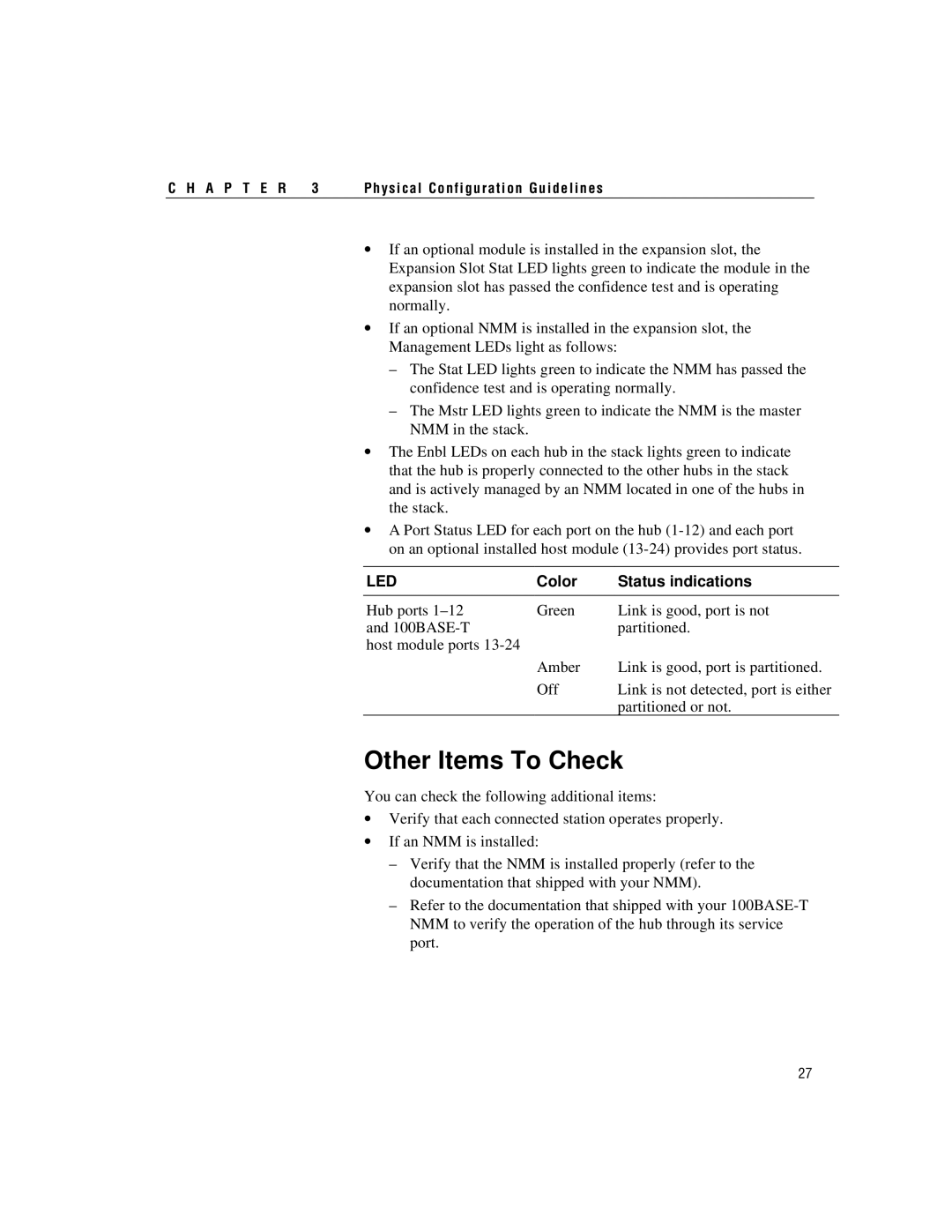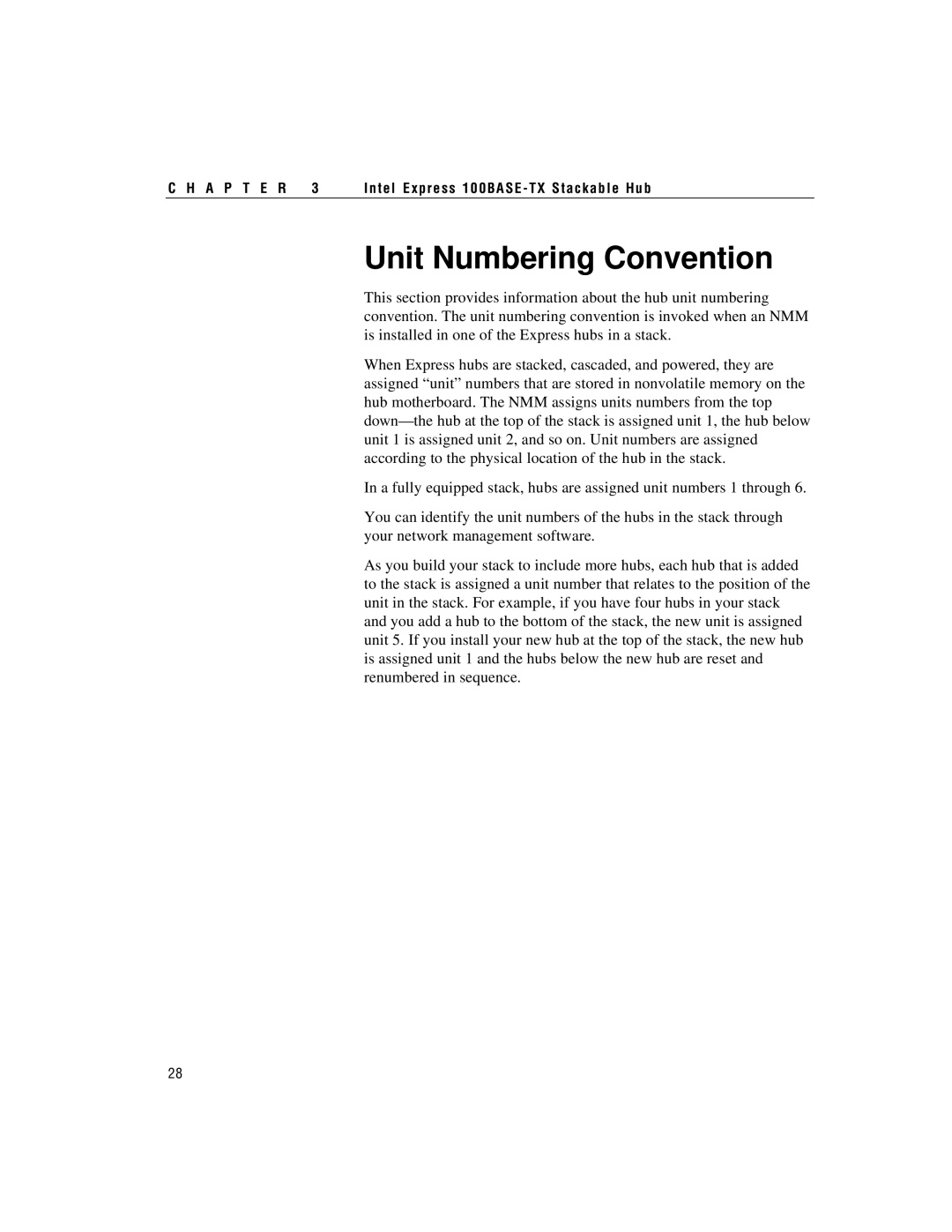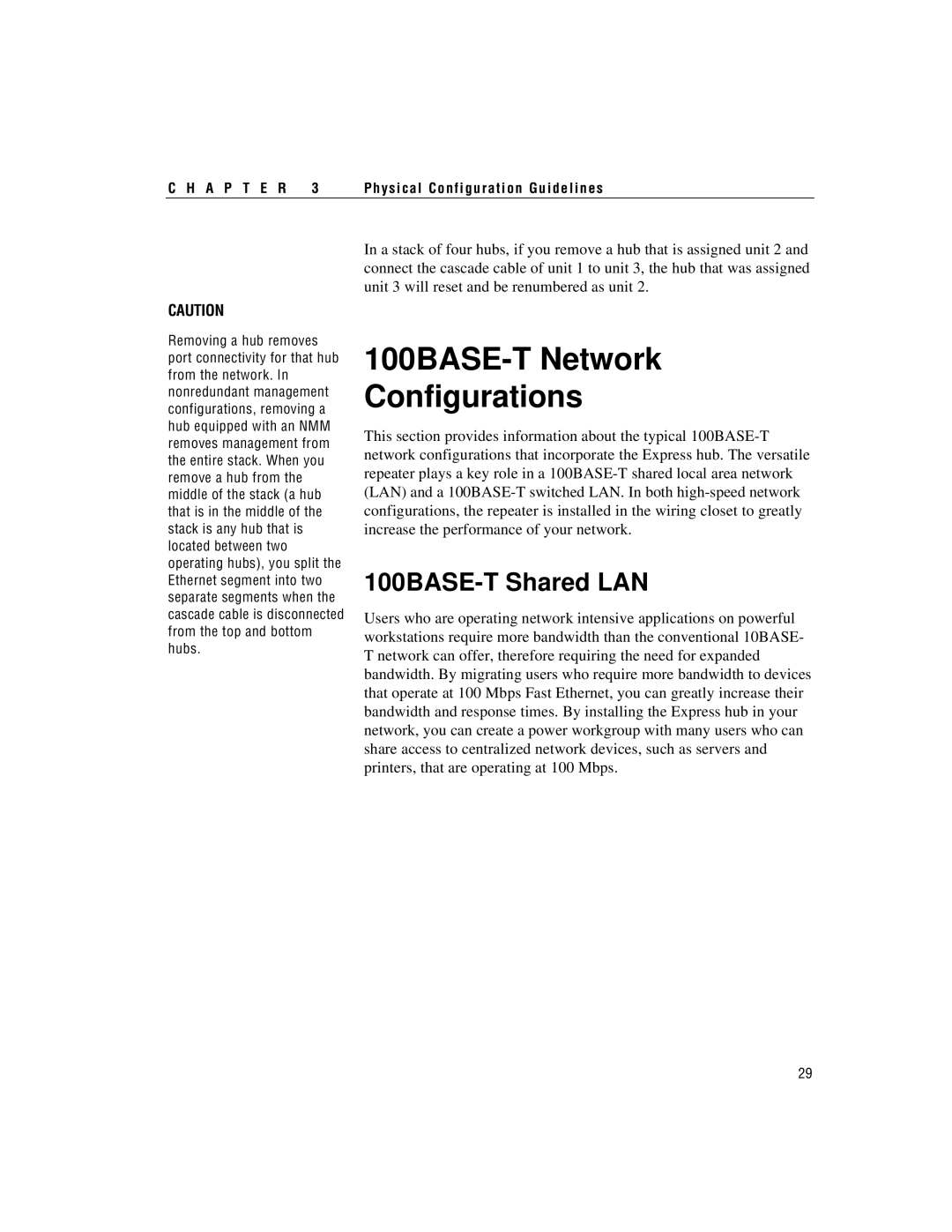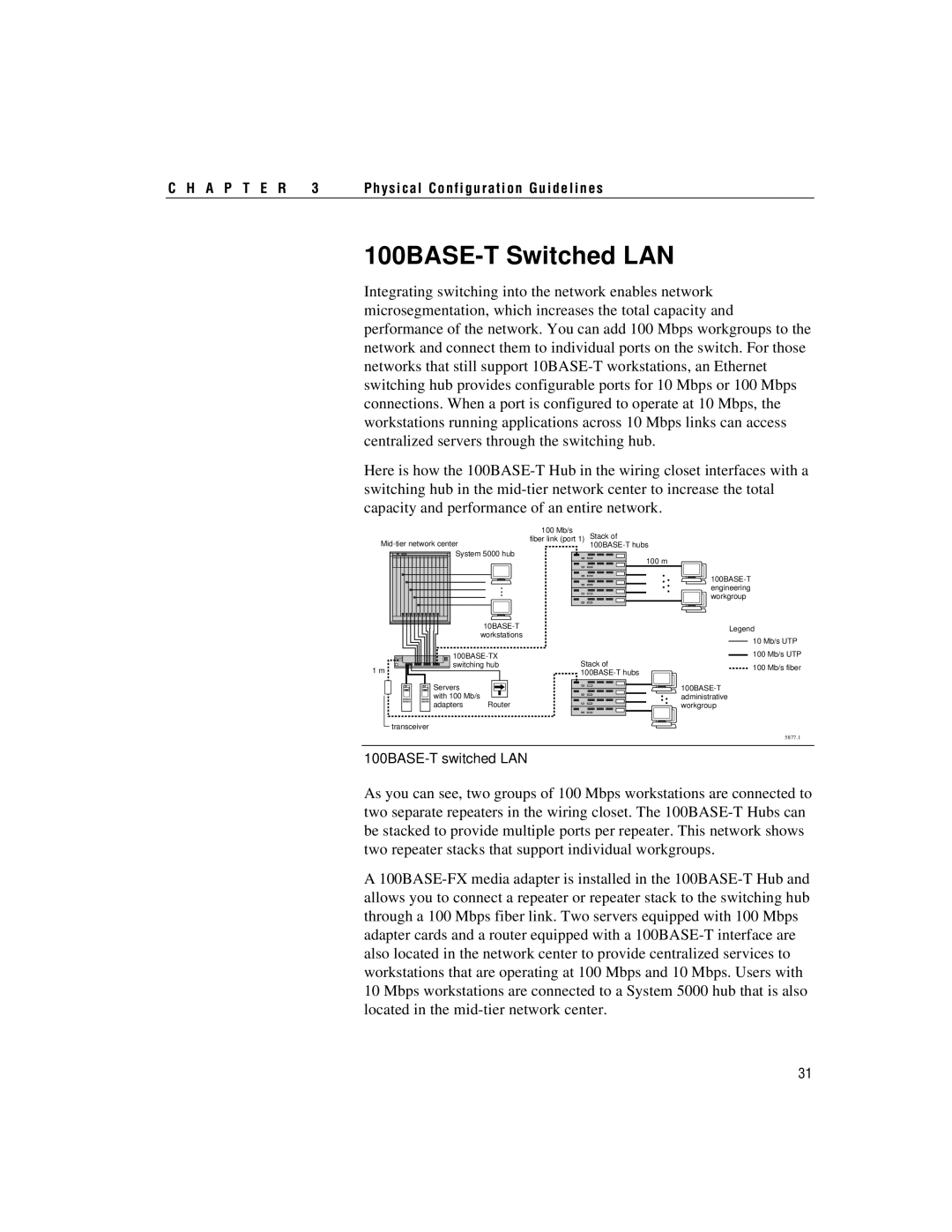
C H A P T E R 1 | Overview |
Rear Panel
The rear panel of the Express hub provides an AC power receptacle, a
Redundant Power connector, and two cascade cable connectors.
Cascade Down | 1 | Cascade Up |
| 2 |
|
Redundant Power | 3 |
|
| Unit Position |
|
5898
Rear panel of the Express hub
Power Receptacle
The AC power receptacle is provided for connection to the AC power outlet. The Express hub accepts between 100 and 240 V AC.
Cascade Connectors
The Cascade Down and Cascade Up connectors and an Intel cascade cable allow you to stack and link multiple Express hubs so you can expand port connections at a particular workgroup in your network. The cascade cable connects to the Cascade Down cable on the top hub and the Cascade Up cable on the bottom hub.
Cascade down
Cascade up
5903
Cascade cable connections
9
